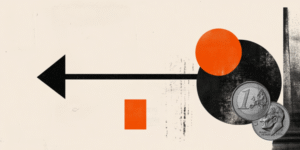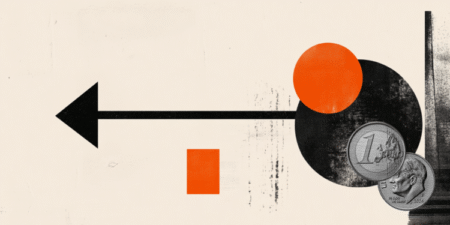- The Japanese Yen retreated slightly from a multi-month high touched against the USD on Monday.
- Trade war concerns, global recession fears, and BoJ rate hike bets should limit deeper JPY losses.
- Trump’s threat to Fed’s independence might cap any meaningful bounce for the USD/JPY pair.
The Japanese Yen (JPY) edges lower during the Asian session on Tuesday amid receding hopes for a quick US-Japan trade deal. Furthermore, signs of stability in the Asian equity markets and a modest bounce in the US indices futures undermine the safe-haven JPY. This, along with a modest US Dollar (USD) rebound from a three-year low touched on Monday, lifts the USD/JPY pair back above the 141.00 round-figure mark.
Meanwhile, investors remain worried about the potential economic fallout from US President Donald Trump’s aggressive tariff policies. This, along with worries that an all-out trade war would trigger a global recession, might keep a lid on any optimism in the markets and act as a tailwind for the JPY. Moreover, bets that the Bank of Japan (BoJ) will raise interest rates further in 2025 should contribute to limiting deeper JPY losses.
Japanese Yen bulls turn cautious amid receding hopes for a US-Japan trade deal; downside seems cushioned
- Following the first Japan-US negotiations last week, Japan’s Economic Revitalization Minister Ryosei Akazawa said that any agreement would likely take some time as it’s difficult to say how long it will take to bridge the gap between the two sides.
- Akazawa added that agriculture will not be compromised to protect the auto industry in US tariff talks. Meanwhile, Japan’s Finance Minister Katsunobu Kato will meet US Treasury Secretary Scott Bessent later this week to discuss currency rates.
- Investors remained on edge amid the uncertainty over US President Donald Trump’s steep tariffs and the effect of the erratic trade war on the global economy. Moreover, Trump’s fresh attack on Federal Reserve Chair Jerome Powell rattled markets.
- Trump accused Powell of not moving fast enough to bring down interest rates. Powell last week said that the central bank was not inclined to cut interest rates in the near future amid the possible inflationary pressures stemming from the new tariffs.
- Meanwhile, White House economic adviser Kevin Hassett has suggested that Trump and his team are studying if they could fire Powell. This raises doubts over the independence of the central bank and keeps the US Dollar bulls on the defensive.
- The Bank of Japan is reportedly planning to signal next week that there is almost no need to change its basic stance on raising interest rates as the potential impact of increased US tariffs will not disrupt the ongoing cycle of wage growth and inflation.
- This marks a big divergence in comparison to expectations that the Fed will resume its rate-cutting cycle in June and lower borrowing costs by one full percentage point by the end of this year. This should further benefit the lower-yielding JPY.
- Traders now look forward to the release of the Richmond Manufacturing Index from the US later this Tuesday. This, along with speeches from influential FOMC members, will drive the USD and provide short-term impetus to the USD/JPY pair.
- The focus will then shift to the global flash PMIs on Wednesday, which would offer a fresh insight into the global economic health. Apart from this, trade-related developments will play a key role in driving the market sentiment and the JPY demand.
USD/JPY needs to surpass the 141.60-141.65 immediate barrier to support prospects for any further recovery
From a technical perspective, the slightly oversold daily Relative Strength Index (RSI) is holding back traders from placing fresh bearish bets around the USD/JPY pair. Any subsequent move up, however, is likely to confront stiff resistance near the 141.65-141.60 horizontal support breakpoint. That said, a sustained strength above could trigger a short-covering rally and lift spot prices beyond the 142.00 round figure, toward the next relevant hurdle near the 142.35-142.40 region.
On the flip side, the 140.45 area, or the multi-month low touched on Monday, now seems to protect the immediate downside, below which the USD/JPY pair could accelerate the fall toward the 140.00 psychological mark. The downward trajectory could extend further towards challenging the 2024 yearly swing low, around the 139.60-139.55 region.
Japanese Yen FAQs
The Japanese Yen (JPY) is one of the world’s most traded currencies. Its value is broadly determined by the performance of the Japanese economy, but more specifically by the Bank of Japan’s policy, the differential between Japanese and US bond yields, or risk sentiment among traders, among other factors.
One of the Bank of Japan’s mandates is currency control, so its moves are key for the Yen. The BoJ has directly intervened in currency markets sometimes, generally to lower the value of the Yen, although it refrains from doing it often due to political concerns of its main trading partners. The BoJ ultra-loose monetary policy between 2013 and 2024 caused the Yen to depreciate against its main currency peers due to an increasing policy divergence between the Bank of Japan and other main central banks. More recently, the gradually unwinding of this ultra-loose policy has given some support to the Yen.
Over the last decade, the BoJ’s stance of sticking to ultra-loose monetary policy has led to a widening policy divergence with other central banks, particularly with the US Federal Reserve. This supported a widening of the differential between the 10-year US and Japanese bonds, which favored the US Dollar against the Japanese Yen. The BoJ decision in 2024 to gradually abandon the ultra-loose policy, coupled with interest-rate cuts in other major central banks, is narrowing this differential.
The Japanese Yen is often seen as a safe-haven investment. This means that in times of market stress, investors are more likely to put their money in the Japanese currency due to its supposed reliability and stability. Turbulent times are likely to strengthen the Yen’s value against other currencies seen as more risky to invest in.
Read the full article here
















